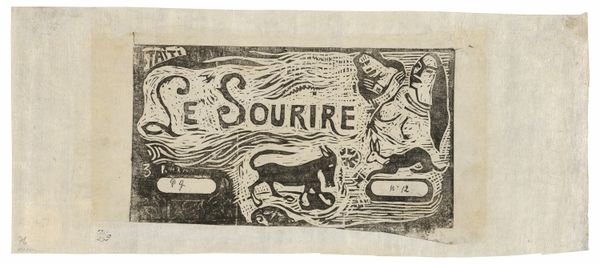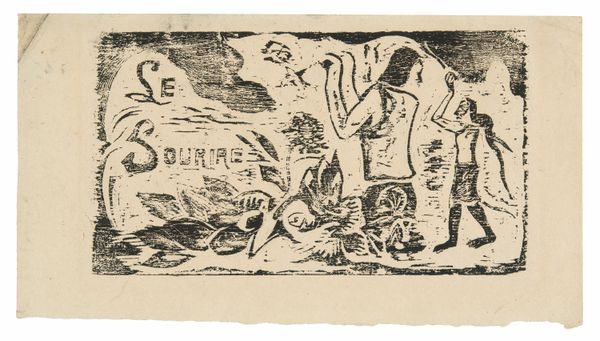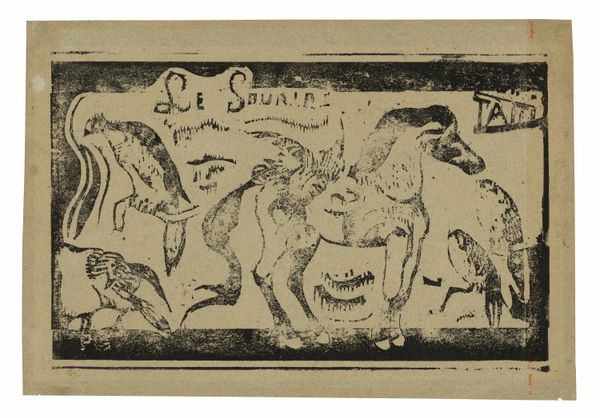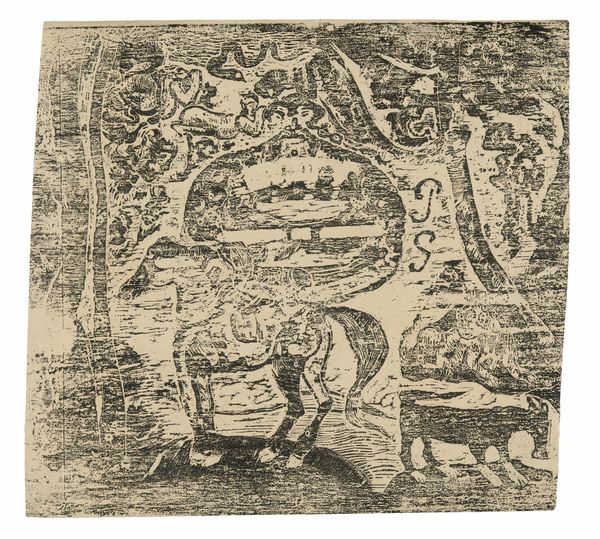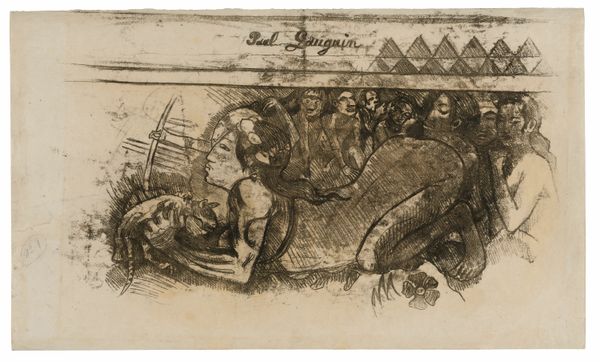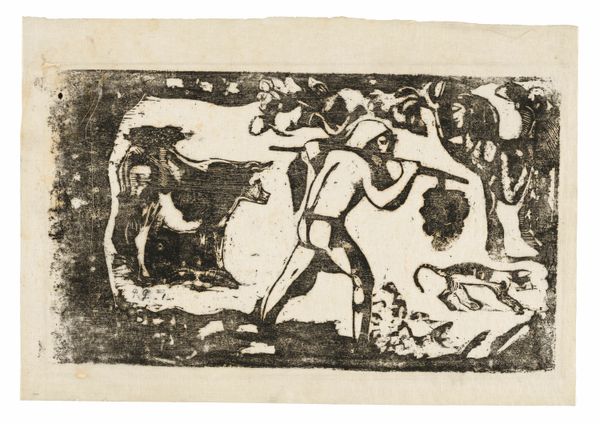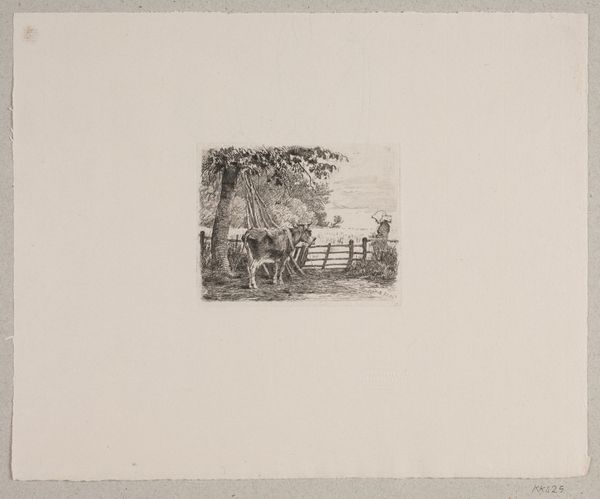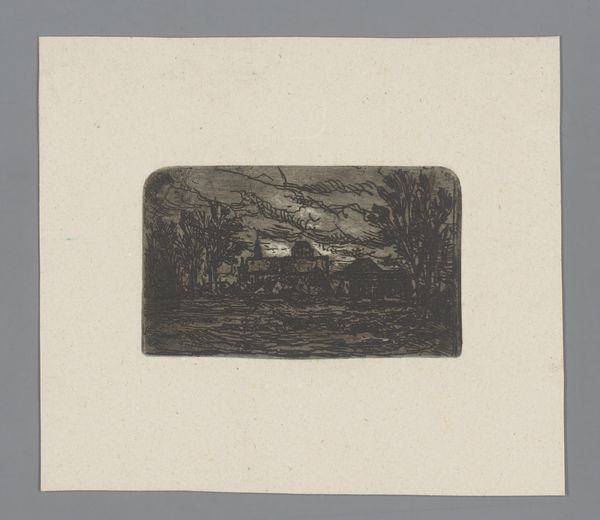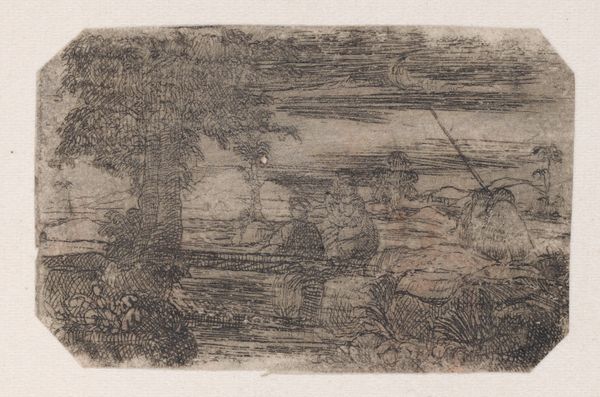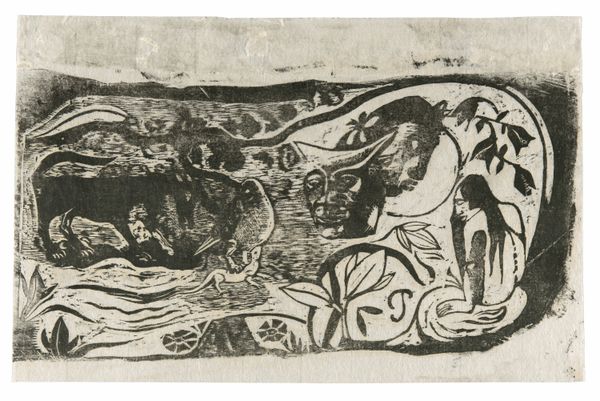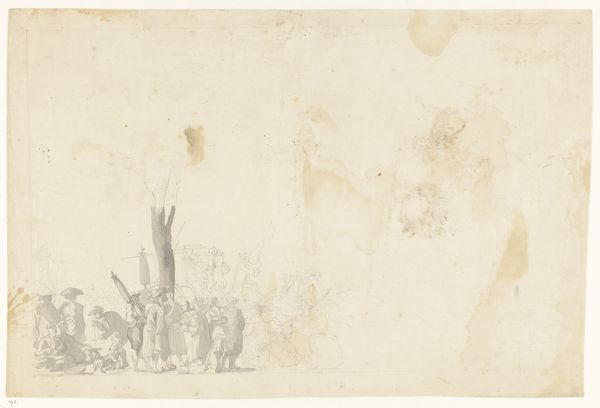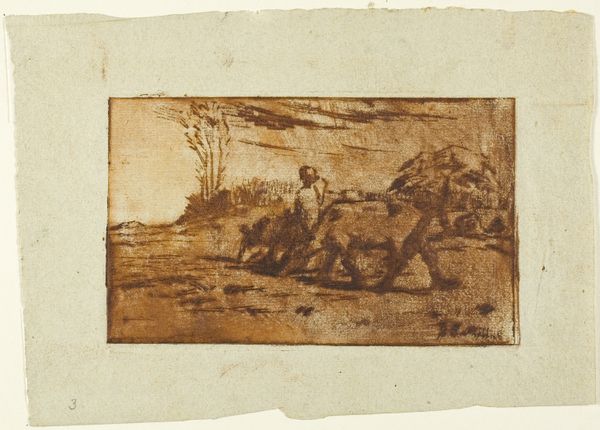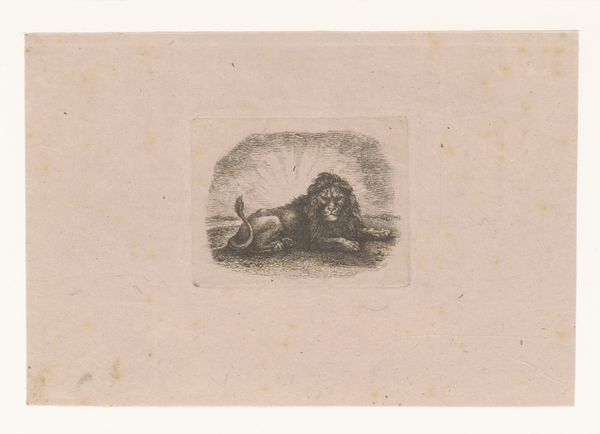
Man Carrying Bananas Followed by Two Horses, headpiece for Le sourire 1900
0:00
0:00
drawing, print, paper, ink, woodblock-print, woodcut
#
drawing
#
narrative-art
# print
#
landscape
#
figuration
#
paper
#
ink
#
linocut print
#
woodblock-print
#
woodcut
#
post-impressionism
Dimensions: 103 × 149 mm (image); 108 × 154 mm (sheet)
Copyright: Public Domain
Editor: This is "Man Carrying Bananas Followed by Two Horses, headpiece for Le sourire" by Paul Gauguin, created around 1900. It's a woodcut print. I'm immediately struck by the raw, almost primitive quality of the linework. It feels very deliberate. What do you see in this piece that speaks to Gauguin’s overall project? Curator: This work provides an interesting window into Gauguin's engagement with colonial contexts and the exoticized portrayal of Polynesian life. While seemingly simple, the image contains a complex interplay of power, labor, and cultural representation. How do we reconcile the aesthetic appeal with the inherent imbalance within the colonial structure represented in this depiction of labor? Editor: So, beyond just a scene of everyday life, there's a deeper critique implied? The man carrying bananas—is he representative of something larger? Curator: Precisely. The man becomes a symbol. Gauguin often positioned himself as an outsider critiquing Western society. How can we interpret the representation of labor, the "primitive," within Gauguin’s own framework as a privileged European artist seeking authenticity in Tahiti? Consider, too, who "Le Sourire" was meant to reach; the intended viewer influences the artwork's message. Editor: That definitely shifts my perspective. It is not simply observing a scene, it is looking *at* something through Gauguin’s filter, in a moment in time. Curator: Exactly. The horses following behind, the man burdened by bananas - are they simply aesthetic elements, or do they become charged symbols of colonial enterprise and the weight of cultural imposition? This forces us to reckon with the ethics of representation, prompting questions about cultural appropriation and the artist’s responsibility to their subject. Editor: I had been focused on the visual language, the stylistic choices of Gauguin but you made me consider what messages about society this picture sends, whether intended or not. That reframes everything! Curator: Art is always a conversation, and it’s through these questions that we unlock deeper understandings. Now you’ll engage art with critical lenses always.
Comments
No comments
Be the first to comment and join the conversation on the ultimate creative platform.
